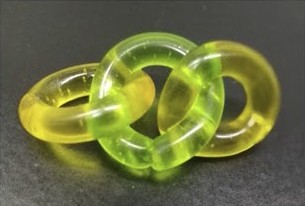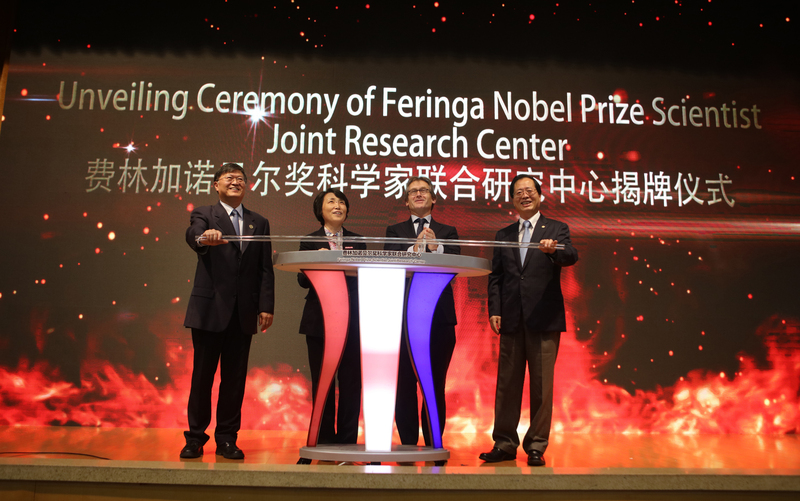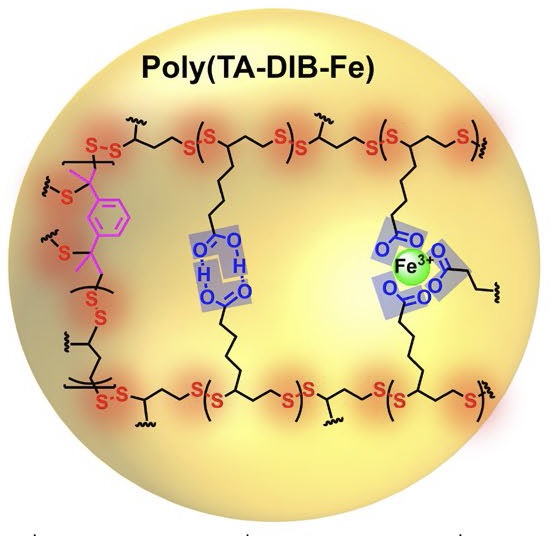Simple process produces complex polymer
Polymeric materials can be very versatile, but this comes at a cost. Complex functionality such as self-healing usually requires a complex synthetic process. The challenge is to prepare polymeric materials with integrated sophisticated properties using extremely simplified routes. University of Groningen organic chemist Ben Feringa, along with colleagues from the East China University of Science and Technology, has done just that. In a paper published in Science Advances on 27 July, they describe how to make a versatile polymer through a simple process.

In the paper, they begin with a natural molecule called thioctic acid. By melting this solid thioctic acid at 70 degrees Celsius and then cooling the material, a polymer is formed. However, it is not very stable. To counter this, Feringa and his colleagues added the compound 1,3-diisopropenylbenzene (DIB) and Iron(III) chloride. By merely adding the compounds before melting the thioctic acid, connections that stabilize the polymer were created.
Complex properties
Although the production is very simple, the resulting material has complex properties. Its mechanical properties are excellent. The material doesn’t crack under pressure and cutting it with a knife is not easy; nevertheless, the polymer can also be stretched up to 150 times its original length without breaking. Scratches on the surface will self-heal at room temperature and when freshly cut surfaces are pressed together, they will fuse and the resulting structure will have a strength comparable to that of virgin material.
The polymer also tends to attach itself to different surfaces by forming hydrogen bonds, which means it can be used as an adhesive. After heating the polymer to its melting point, the liquid was used to glue two glass slides together. A weight of 5 kg could be hung from slides bonded by a 2 x 2 cm glued area. The authors conclude that ‘this simple copolymer might have major potentials in the fabrication of adhesives, self-healing materials, and wearable and biodegradable devices.’
Feringa Nobel Prize Scientist Joint Research Center
The work described in this paper was done at the Feringa Nobel Prize Scientist Joint Research Center, School of Chemistry and Molecular Engineering, East China University of Science and Technology (ECUST) in Shanghai. Feringa, who received an honorary professorship at ECUST in November 2016, helped in conceiving and designing the project. The Feringa Nobel Prize Scientist Joint Research Center was officially opened in October 2017
European Chemistry Gold Medal
On 26 August the European Chemistry Gold Medal Award will be presented to Ben Feringa. This new award was founded by the European Chemical Society (EuChemS) and honours a scientist who has made outstanding contributions to the field of chemistry. ‘Not only is Ben a fantastic scientist, he is a great ambassador for the field of chemistry, a gifted communicator and a source of inspiration for many scientists in Europe and the rest of the world’, says EuChemS board member Saskia de Vies.
More information
Reference: Qi Zhang, Chen-Yu Shi, Da-Hui Qu, Yi-Tao Long, Ben L. Feringa and He Tian. Exploring a naturally tailored small molecule for stretchable, self-healing, and adhesive supramolecular polymers. Read the full article.


More news
-
15 September 2025
Successful visit to the UG by Rector of Institut Teknologi Bandung
